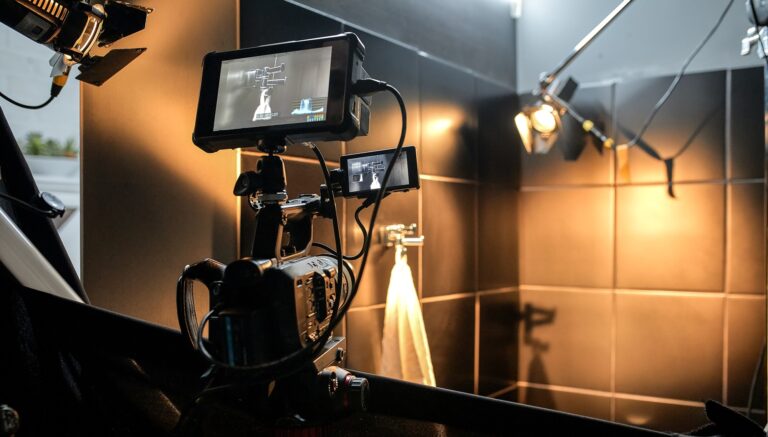The history of video production is a fascinating journey that has seen significant transformations over the years. From the early days of black and white films to the advent of color and sound, the industry has continually evolved to meet the changing demands of audiences. The 21st century has seen the rise of digital technology, revolutionizing the way videos are produced, distributed, and consumed.
The Evolution of Video Production: A Look Back
In the past, video production was a labor-intensive process that required large teams and expensive equipment. However, the advent of digital technology has democratized the process, making it accessible to a wider range of creators. Today, anyone with a smartphone can produce high-quality videos, a development that has led to an explosion of content on platforms like YouTube and TikTok.
The rise of streaming services like Netflix and Amazon Prime has also transformed the landscape of video production. These platforms have ushered in a new era of binge-watching, where entire seasons of shows are released at once, changing the way stories are told and consumed. This shift has necessitated a change in the production process, with a greater emphasis on planning and storyboarding to ensure a cohesive narrative across multiple episodes.

Understanding the Importance of Storyboarding in 2024
Storyboarding is a crucial step in the video production process. It involves creating a visual representation of the video, scene by scene, to provide a roadmap for the production team. In 2024, the importance of storyboarding cannot be overstated.
In an era where content is king, storyboarding helps creators to plan their videos meticulously, ensuring that every scene contributes to the overall narrative. It allows for the identification of potential issues before production begins, saving time and resources. Moreover, it facilitates communication within the team, ensuring everyone is on the same page regarding the vision for the video.
The rise of virtual reality (VR) and augmented reality (AR) technologies has added a new dimension to storyboarding. In 2024, creators are increasingly using these technologies to create immersive storyboards that allow them to visualize their videos in a more realistic and engaging way. This trend is expected to continue, with advancements in technology making VR and AR more accessible to creators.
The Process of Transitioning from Storyboard to Screen
The transition from storyboard to screen is a complex process that involves several stages. First, the storyboard is reviewed and approved by the director and other key members of the production team. This ensures that the storyboard aligns with the vision for the video and that all potential issues have been addressed.
Once the storyboard is approved, the production team begins the process of bringing it to life. This involves a range of activities, from scouting locations and casting actors to shooting and editing the video. Throughout this process, the storyboard serves as a guide, ensuring that the final product aligns with the initial vision.
In 2024, technology plays a crucial role in this transition. Digital storyboards can be easily shared and edited, facilitating collaboration among the production team. Moreover, software tools allow for the creation of animatics – animated versions of the storyboard – which provide a more detailed guide for the production process.
Technological Advancements in Video Production: A 2024 Perspective
In 2024, technology continues to revolutionize the video production process. From high-definition cameras and drones to advanced editing software, technological advancements have made it easier than ever to produce high-quality videos.
One of the most significant advancements is the rise of artificial intelligence (AI) in video production. AI can automate various aspects of the production process, from scriptwriting to editing, saving time and resources. Moreover, AI can analyze viewer behavior to provide insights that can be used to optimize video content.
Virtual reality (VR) and augmented reality (AR) technologies are also transforming video production. These technologies allow for the creation of immersive videos that provide a more engaging viewing experience. In 2024, we are seeing an increasing number of creators leveraging these technologies to push the boundaries of storytelling.
Case Studies: Successful Video Productions of 2024
In 2024, several video productions stand out for their innovative use of technology and storytelling. One such example is the Netflix series “Stranger Things,” which has garnered critical acclaim for its nostalgic homage to 80s pop culture and its innovative use of visual effects.
Another notable example is the YouTube series “Life in a Day 2024,” which is a sequel to the original “Life in a Day” project. The series is a compilation of user-generated content, showcasing a day in the life of people around the world. The project leverages the power of digital technology to create a global, collaborative video production.
Future Trends and Predictions in Video Production Beyond 2024
Looking beyond 2024, several trends are expected to shape the future of video production. The rise of AI is likely to continue, with AI becoming increasingly sophisticated and capable of automating more aspects of the production process.
Virtual reality (VR) and augmented reality (AR) technologies are also expected to become more prevalent. As these technologies become more accessible, we can expect to see more creators leveraging them to create immersive videos.
Finally, the trend toward the democratization of video production is likely to continue. With the advent of smartphones and affordable equipment, more people will have the tools to create high-quality videos. This will lead to an explosion of content, with a greater diversity of voices and perspectives being represented.
In conclusion, the future of video production is bright, with technology playing a crucial role in shaping the industry. As we move forward, it will be exciting to see how these trends unfold and how they will impact the way we create and consume video content.





